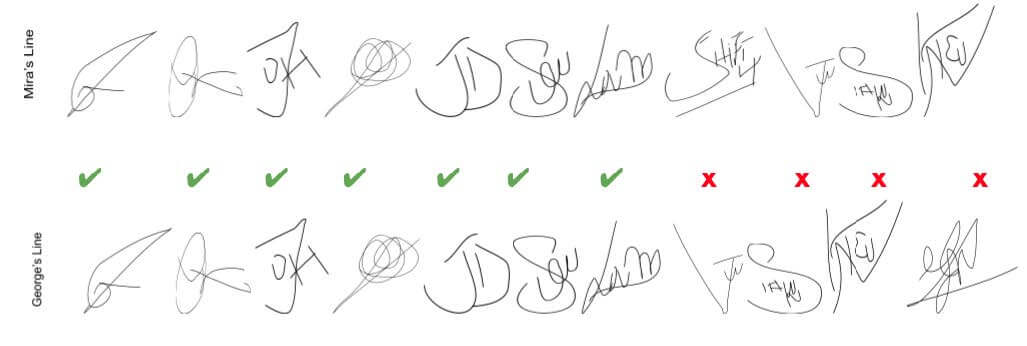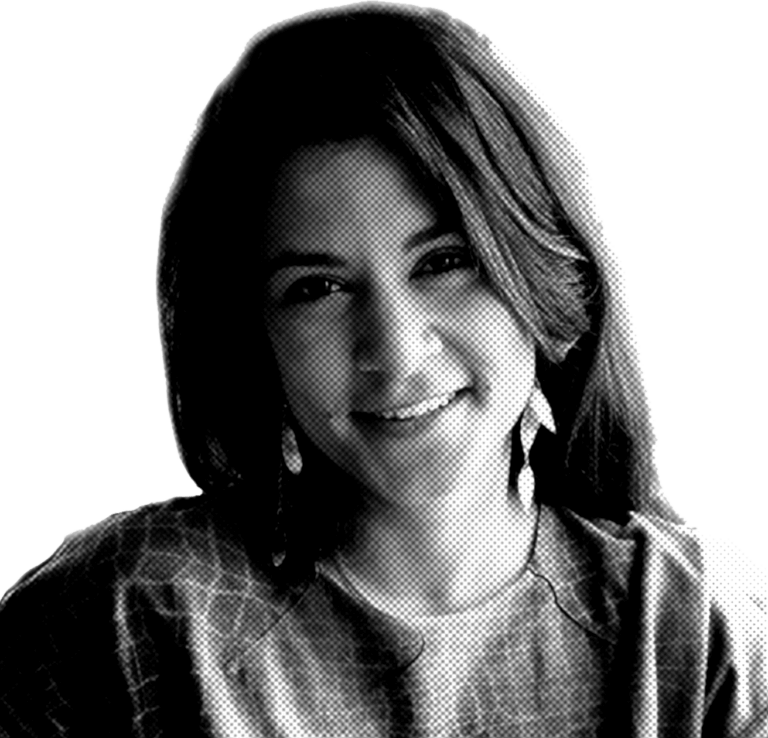To understand what ‘Blockchain’ means, we need to understand the problem(s) that the Blockchain solves. ***
Hypothetical Scenario
Mira and George are running the same study in their school. They are each trying to collect the signatures of all the students in class A. They must approach the students by their first name, in ascending alphabetical order. They are working independently, each on a separate sheet. At the end of the day, they compare the two sheets of signatures.
The signature line should be identical, but there is a discrepancy in the order. They now must track back the signatures of the students up to the point of discrepancy to identify where the error occurred. Because there are only 30 students in the class, Mira and George can look at the signatures one by one and work their way back, to identify where the discrepancy happened and can deduce that the signatures before the discrepancy occurred are valid and those after the discrepancy occurred are invalid.

But what happens if the class has 2,000 students? or 20,000 students? Then, tracing back the signatures would become very taxing and time consuming, and in some cases, it’s simply not feasible.
Ok, this is a nice hypothetical example, but what does the Blockchain have to do with it?
The Blockchain has the potential to solve Mira and George’s problem. It can verify the ‘chain of signatures’, regardless of how long and how complex it is, to ensure that they match and that the information you are given is correct.
How does it do that?
The Blockchain is a technology that records information. It is essentially a ledger. In the case of Mira and George, it will make sure that the signatures are recorded in the correct order, that they match. It is also created in such a way that it’s nearly impossible to cheat or alter the information recorded on it.
What does the Blockchain look like?
It’s in the name: it’s a chain of blocks. These blocks are created from complex mathematical “computer” or software code. These codes represent information, which is digitally encrypted and recorded on the blockchain. This information, or data, could be anything, like the colour of a person’s eyes, or how much they paid for a loaf of bread.
The records are then grouped into blocks, and these blocks in turn are linked to each other, in order, through a chain – hence the name: block chain. Each block points to the previous block attached to it, in a line, to maintain the continuity of the chain. Once a block is created and added to the chain of previous blocks, it’s extremely difficult to remove or alter.

Ok. But how does this apply to real life problems?
Let’s take a look at a real life example:
In Town Alpha, there was an outbreak of an illness that the public health team traced back to a specific brand of beef. The private organisation responsible for delivering the beef is the only entity that has access to the information related to the source of the beef.
After some delay, the private organisation starts cooperating, but it appears that they have mixed up some of the records related to the beef supply chain, making it very difficult to identify important elements in the chain, such as: the farm that produced the beef; the material fused in the packaging; the sources of the preservatives added and the storage and transport conditions. This delays the process of locating the source of the disease and increases the chances of more people getting ill.
Therefore, transparency in supply chains is crucial for the safety of consumers. This also applies to any “chain of custody” ( = the order in which the events took place).
While Mira and George were able to trace back their small chain of signatures and identify the ‘error’, how can a bigger organisation trace back the chain of supply of the affected product in order to identify the area of ‘discrepancy’, (here the ‘source of infection’) and solve the problem?
Having an accurate, transparent, tamper proof, trustworthy ledger is extremely important in several industries and in daily life transactions. The Blockchain is that ledger.

I gave an example of how blockchain technology can solve the problems of food traceability by creating transparent, accurate and trustworthy chain of custody databases. But this is not the only problem that the Blockchain can solve. More on this in future blogs.
Ok. But how do you know that the information on the block is accurate?
When new information is entered on the Blockchain, for example a transaction that you’ve made online, thousands of computers (nodes) are waiting to confirm the transaction, and therefore confirm its accuracy. Once a computer has verified that the transaction is accurate, the block is now added to the previous blocks.
Right, but it can still be tampered with right?
No. When the block above was added to the previous blocks, all the computers on the network (thousands of them) were able to see and verify this transaction. The blocks get synchronised in their chronological order to all the nodes on a network. This means that each computer has the same version of the Blockchain, the same story. So, any attempt to tamper or edit the recorded data on one version, would create a discrepancy between that ‘tampered with’ version and the other correct versions. The ‘tampered with’ version will therefore be rejected.
In the meantime, there is one question that seems to often come up when talking about blockchain technology:
What’s the difference between Blockchain, Bitcoin, Ethereum and Cryptocyrrencies in general?
Cryptocurrencies, like Ethereum and Bitcoin, are created using blockchain technology – they are digital currencies that run on the Blockchain.
One of the best analogies I heard about the Blockchain and cryptocurrency (and humbly borrow it from its unidentified source) is the following: think of blockchain technology like a freight train that can carry and transport cars. Cryptocurrency is just one car on the Blockchain train.
More on this next time.
*** Note: This article is intended as a very basic and oversimplified overview of this topic. To all the blockchain experts, forgive the liberties taken in trying to explain immensely clever and complex technologies.


